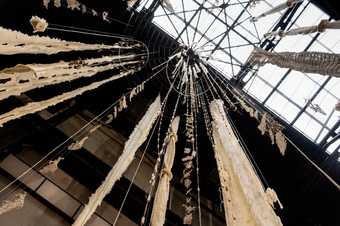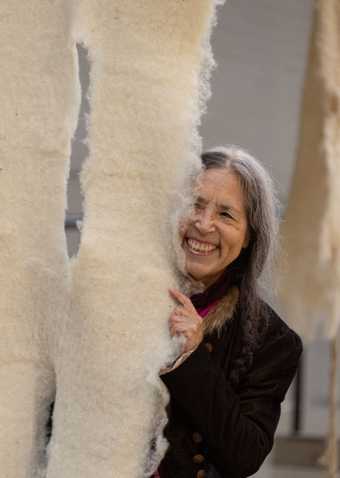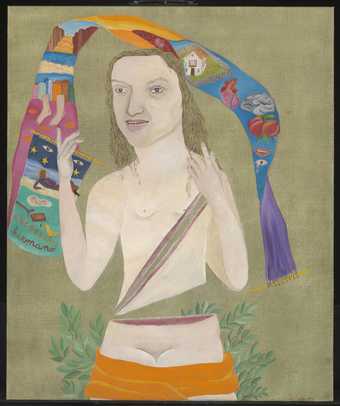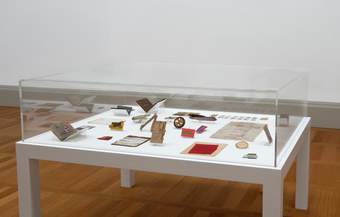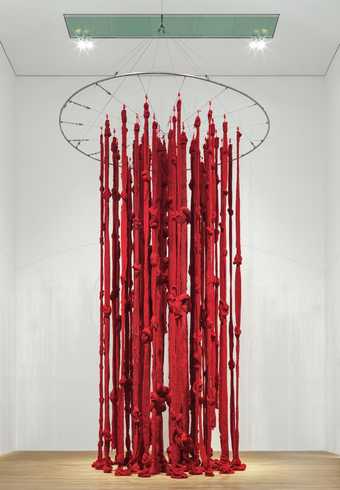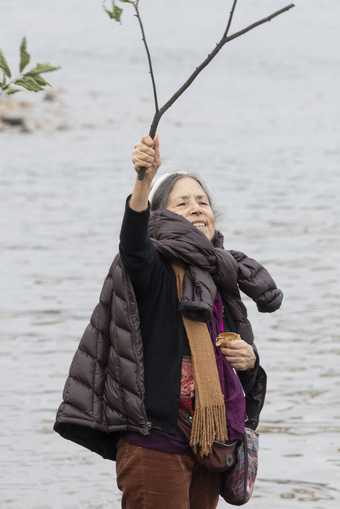I have had a political orientation in my art from day one but that is because I was a teenager when I read I understood that the life of this planet was endangered.
My name is Cecilia Vicuña. I’m a poet and artist I was born in Chile.
When I first came to London, I arrived in September of 1972. I got a grant from the British Council to come study here. I was here for just a few months when the military coup occurred in Chile and therefore I did not return.
So that's how I became an exile. Since then I have never been able to live in Chile again.
I call my work ‘Arte Precario’ - precarious art. Precarious because it disappears. Because it's fragile. Because it's vulnerable. Whether it is a twig, a stone, a piece of metal, a piece of plastic, everything to me feels alive with history. With decay. With the potential and possibility of dying, of dissolving, and for me that is its beauty.
It is a conscious choice on my part to focus on what is dying and disappearance. The reason for that is that when I was young everything that was decaying was regenerating life.
Now we have created the terminal death. A new kind of death in this planet. A kind of death that did not exist, that was not created by a biological process.
This new kind of death continues to be my focus and that's why all the materials that you see are shredded, falling apart and about to become nothing. Because that is what may happen to us as a species very soon unless we wake up in time to protect the ecosystems that we are destroying right now.
Use this one. This one we can convert into that. Okay so we have now uno, dos, tres and we have one from there. What about this one? That's perfect.
This is so beautiful. We could use for the for the scarf.
And you want to do this.
In the quipus that I have constructed in the, the Turbine Hall most of those materials whether it is a twig, whether it is a bamboo stick, they are disappearing. The plant fibers that I use are also disappearing.
Quipu means knot in Quechua. It is is a system of encoding information through knots that are so complex that can convey as much information as the Phoenician alphabet, which is the writing system that we use in the West. So this system of encoding information in knots was used for almost 5000 years in the Andes, until the conquest.
I suppose when I met the quipu I was flabbergasted at the notion that this incredible system existed and it had been taken away from us. Erased from our cultural memory.
A knot is a gathering of energy and if you extend that to the history of five thousand years of people making, everybody who has ever been connected to the quipu is connected to a field of knowledge, a field of love and understanding.
I began collaborating to create my art in the 60s. The audience and I become co-creators. It is an invitation for us to share so that we can acknowledge that experience is not just our own experience. Experience is what we experience together and that creates many points of view. and many points of view have to be aware of each other so that there is no oppression or domination.
And as time goes by it becomes more and more of a necessity to work including as many people as possible because we have to reconnect and rebuild and grow with the notion that we have to work together.
And why is that? Not only for a survival of our species but most of all because it's joyful. Because it's fun and it's beautiful and it's delightful.
The most beautiful experience that I have had is that when the social uprising began in Chile in October of 2019, people began picking up certain lines of my poetry and my palabrarmas.
And the line that was repeated most often and that people converted it into banners was ‘Tu rabia es tu oro’. Which means ‘Your rage is your gold’. Because it is a rage that's coming from love. From love for each other. Love for the Earth and it is this rage that can transform the world.
The rage of love, of pure love.
